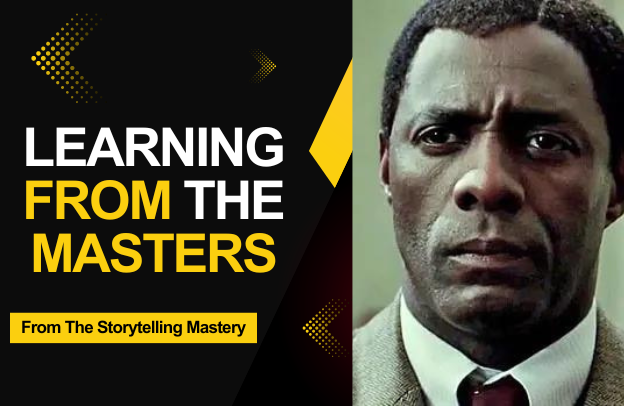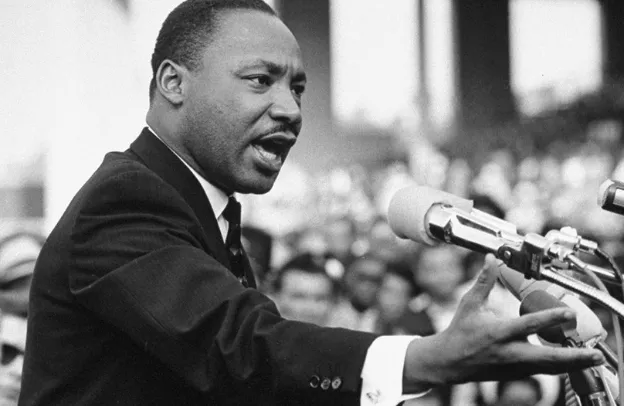Mandela: Long Walk To Freedom, Played Idris Elba – 6 Key Lessons For Beginner Storytellers – Learning From The Masters

Have you ever wondered how professional storytellers weave magic into their tales? Join us on an exploration of the movie ‘Mandela: Long Walk to Freedom,’ where Idris Elba plays the legendary Nelson Mandela. We will break down the movie’s storytelling tricks and give you 6 simple lessons to make your stories more compelling! Besides the 6 key lessons, we will also consider the theme of freedom and activism in the African diaspora community and effective ways to promote activism in the African diaspora community. So, pay attention as we dive into the story.
Want to learn more? Then start by downloading the first chapter of The Storytelling Mastery.
The film plot – Mandela: Long Walk to Freedom
“Mandela: Long Walk to Freedom” chronicles the remarkable life of Nelson Mandela, from his early days in rural South Africa to his emergence as a key figure in the anti-apartheid movement.
The film delves into Mandela’s personal and political journey, highlighting his role in the African National Congress (ANC) and the subsequent decades-long struggle against the oppressive apartheid regime.
The narrative unfolds with Mandela’s activism turning to resistance, leading to his arrest, imprisonment, and the globally significant Rivonia Trial. The film provides a comprehensive portrayal of Mandela’s resilience, sacrifice, and commitment to justice as he evolves from a young lawyer to an iconic leader fighting for the liberation of his people.
See the full video – Mandela: Long Walk To Freedom, Played Idris Elba – 6 Key Lessons For Beginner Storytellers – Learning From The Masters
As the story progresses, “Mandela: Long Walk to Freedom” captures Mandela’s transformative 27-year imprisonment on Robben Island and his eventual release, marking a pivotal moment in South Africa’s history.
The film portrays Mandela’s instrumental role in negotiating the end of apartheid, his election as South Africa’s first president, and his efforts to reconcile a divided nation.
Mandela’s journey from political prisoner to president sums up the triumph of hope over adversity and the enduring power of forgiveness and reconciliation. The film serves as an inspiring tribute to Mandela’s legacy and his tireless pursuit of freedom and equality.
Freedom and activism in the African diaspora community
The theme of freedom and activism within the African diaspora community revolves around the persistent struggle for liberation, equality, and justice. It encompasses a historical narrative marked by resistance against colonization, slavery, apartheid, and other forms of systemic oppression.
Across different regions and periods, individuals within the African diaspora have engaged in activism to challenge discriminatory practices and demand the recognition of their inherent rights.
This theme highlights the resilience and collective determination of the diaspora to break free from the chains of injustice, aiming for a future where freedom is not just an aspiration but a lived reality.
The African diaspora’s activism extends beyond geographical boundaries, connecting communities globally in a shared pursuit of social, political, and economic emancipation. Through movements, protests, art, literature, and other forms of expression, individuals within the diaspora amplify their voices, reclaim their cultural identities, and challenge structures that perpetuate inequality.
The theme underscores the ongoing journey toward freedom, emphasizing the importance of unity, self-determination, and a continuous commitment to dismantling systemic barriers that hinder the full realization of individual and collective freedoms within the African diaspora.
Lesson 1: Embrace Personal Growth and Transformation
Lesson: One significant instance in the film showcases Nelson Mandela’s evolution from a young lawyer to a resilient leader during his imprisonment on Robben Island. Initially introduced as a charismatic and determined lawyer advocating for anti-apartheid causes, Mandela’s journey takes a transformative turn when he is imprisoned for 27 years.
During his incarceration, Mandela not only endured the harsh conditions but also emerged as a symbol of unwavering resistance and leadership among his fellow inmates.
His ability to lead, inspire, and maintain a sense of purpose in the face of adversity highlights a remarkable evolution. This helps to solidify Mandela’s legacy as a resilient and visionary leader within the context of the anti-apartheid struggle.
This instance underscores the power of personal growth and resilience in the face of immense challenges.
Application: Develop characters that undergo significant personal growth. Show their transformation over time, allowing your audience to connect with the journey and struggles of the characters. This adds depth and relatability to your narrative.
Lesson 2: Explore the Complexity of Characters
Lesson: Mandela’s portrayal as a multifaceted individual with strengths and flaws played a significant role in the film’s success. Rather than presenting Mandela as a flawless hero, the narrative delves into his complexities, revealing both his admirable qualities and human imperfections.
The film showcases Mandela’s charisma, strategic brilliance, and unwavering commitment to justice, but it also explores his personal struggles, strained relationships, and moments of self-doubt.
This portrayal adds depth and authenticity to the character, emphasizing that even iconic leaders like Mandela were inherently human. This reflects the importance of crafting characters with nuance, allowing them to be relatable and compelling by embracing the details of their personalities and experiences.
Application: Avoid one-dimensional characters. Create protagonists and antagonists with depth, presenting them as nuanced individuals with motivations and complexities. This adds authenticity to your storytelling and keeps your audience engaged.
Lesson 3: Use Symbolism and Metaphor
Lesson: Mandela’s symbolic act of planting a garden in prison. In Mandela: Long Walk to Freedom, there is an emotional instance where Nelson Mandela engages in a symbolic act by planting a garden while in prison on Robben Island.
This act serves as a powerful metaphor for Mandela’s enduring hope, resilience, and commitment to positive change, even in the face of oppression.
Despite the harsh conditions of imprisonment, Mandela transforms a barren space into a garden, showcasing his determination to cultivate something meaningful and beautiful amidst adversity. This symbolic act becomes a profound representation of Mandela’s belief in the possibility of growth, transformation, and renewal, even within the confines of confinement.
The instance highlights the potency of using symbolism and metaphor to convey deeper meanings and emotions within a narrative, urging beginner storytellers to explore creative ways to imbue their stories with powerful and symbolic elements.
Application: Integrate symbolism and metaphor into your narrative. It could be objects, actions, or settings that carry deeper meanings, enriching the story’s layers and providing a more profound impact on your audience.
Lesson 4: Convey Emotional Resonance
Lesson: If you have watched the film, you cannot forget the emotional moments when Mandela was released from prison. The film beautifully captures the profound and historic moment as Mandela walks out of Victor Verster Prison, a free man after 27 years of captivity.
This scene is emotionally charged, resonating with viewers as Mandela embraces his loved ones and steps into a new era for South Africa. The raw emotion expressed by Mandela and those around him reflects not only personal triumph but also the collective victory over apartheid.
This instance underscores the impact of conveying powerful emotions in storytelling, urging beginners to explore ways to authentically evoke and depict the emotional highs and lows of their characters, ensuring a deeper connection with the audience.
Application: Infuse your narrative with emotional resonance. Whether through dialogue, actions, or situations, make your audience feel the emotions your characters experience. This connection enhances the impact of your story.
Lesson 5: Highlight Cultural Identity
Lesson: In “Mandela: Long Walk to Freedom,” the film effectively depicts South African culture, traditions, and languages throughout its narrative. The instances include vibrant scenes portraying traditional dances, ceremonies, and cultural rituals that are integral to the diverse communities within South Africa.
The film also incorporates multiple languages spoken in the country, showcasing the linguistic richness of the region. This portrayal adds authenticity to the storytelling, offering a window into the cultural fabric of South Africa and emphasizing the importance of representing diverse cultural elements within a narrative.
Application: For beginner storytellers, this instance encourages the incorporation of cultural authenticity, ensuring that characters, settings, and dialogues reflect the rich cultural diversity of the African diaspora and contribute to a more immersive and genuine storytelling experience.
You can do this by showcasing the cultural identity of your characters and settings. Bring authenticity to your narrative by incorporating cultural elements, rituals, or language that reflect the richness of the African diaspora. This adds depth and relatability to your story.
Lesson 6: Address Sociopolitical Issues
Lesson: Political activism is central to the film which chronicles Mandela’s dedication to dismantling the oppressive apartheid system in South Africa. It highlights key moments, such as his involvement in the African National Congress (ANC), strategic resistance, and pivotal role in the anti-apartheid movement.
The instances of Mandela’s activism depict his tireless efforts, from peaceful protests to the more confrontational aspects of the struggle for justice. This portrayal serves as a powerful reminder of the importance of addressing sociopolitical issues within narratives.
This encourages beginner storytellers to explore themes of activism, resistance, and social justice to engage their audiences with compelling and meaningful stories.
Application: Engage with sociopolitical issues relevant to the African diaspora. Whether historical or contemporary, use your narrative as a platform to address and shed light on issues like racism, discrimination, or social injustice. This can elevate your storytelling to a higher purpose, inspiring awareness, and change.
By embracing these lessons and drawing inspiration from instances in “Mandela: Long Walk to Freedom,” beginner storytellers can infuse depth, authenticity, and impact into their own narratives within the context of the African diaspora.
Promoting activism in the African diaspora community
There is no way we can ever discourage activism in the African diaspora community because we need it to build a better society for our common interest and what we represent. Now here are three ways to approach that for results:
Storytelling and Media Engagement:
Utilize the power of storytelling and media to amplify voices and narratives within the African diaspora community. Create and share compelling stories, documentaries, and films that highlight historical struggles, achievements, and contemporary challenges.
These narratives can serve as powerful tools for education and inspiration, fostering a sense of collective identity and encouraging activism. Social media platforms, podcasts, and community events provide accessible avenues for sharing these stories and engaging a wider audience.
By promoting diverse narratives that showcase the richness of the African diaspora experience, individuals can galvanize support for activism around the theme of freedom.
Community Education and Empowerment Workshops:
Organize educational workshops and empowerment sessions within African diaspora communities to enhance awareness and understanding of historical and current issues related to freedom and activism.
These workshops can cover topics such as the history of resistance movements, the impact of systemic racism, and strategies for community empowerment. Invite knowledgeable speakers, activists, and educators to facilitate discussions and share insights.
Empower community members with the tools and knowledge to advocate for change, encouraging grassroots activism and fostering a sense of responsibility for collective liberation.
Through informed and engaged communities, the momentum for activism around the theme of freedom can grow, leading to meaningful and sustained efforts.
Collaborative Artistic Expression:
Harness the power of artistic expression, including visual arts, music, dance, and literature, to convey messages of freedom and activism. Collaborate with local artists within the African diaspora to create thought-provoking and emotionally resonant works that address social issues.
Art can transcend barriers and evoke powerful emotions, making it an effective tool for conveying the urgency and importance of the struggle for freedom. Organize art exhibitions, performances, or cultural festivals that showcase these creations, providing a platform for dialogue and reflection.
By integrating art into activism efforts, individuals can inspire creativity, ignite passion, and foster a deeper connection to the shared values of freedom within the African diaspora community.
Conclusion on Mandela: Long Walk To Freedom
Through the power of storytelling, education, and artistic expression, we can plant seeds of change that, like resilient saplings, will grow into mighty trees of freedom.
So, let us keep standing united, inspired by the indomitable spirit that courses through our veins, as we strive for a future where freedom is not just a dream but a lived reality for every individual within the African diaspora.
Together, we carry the torch of hope, lighting the way toward a world where our collective voice echoes the triumph of justice, equality, and the unyielding pursuit of freedom for generations to come.
Want to learn more? Then start by downloading the first chapter of The Storytelling Mastery.






